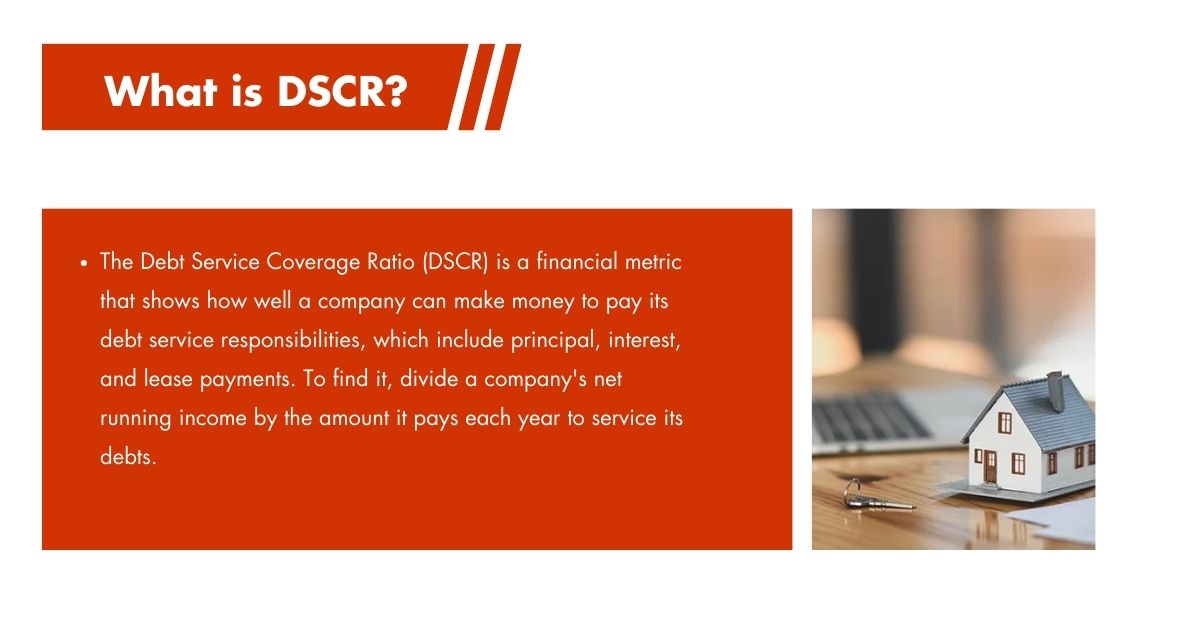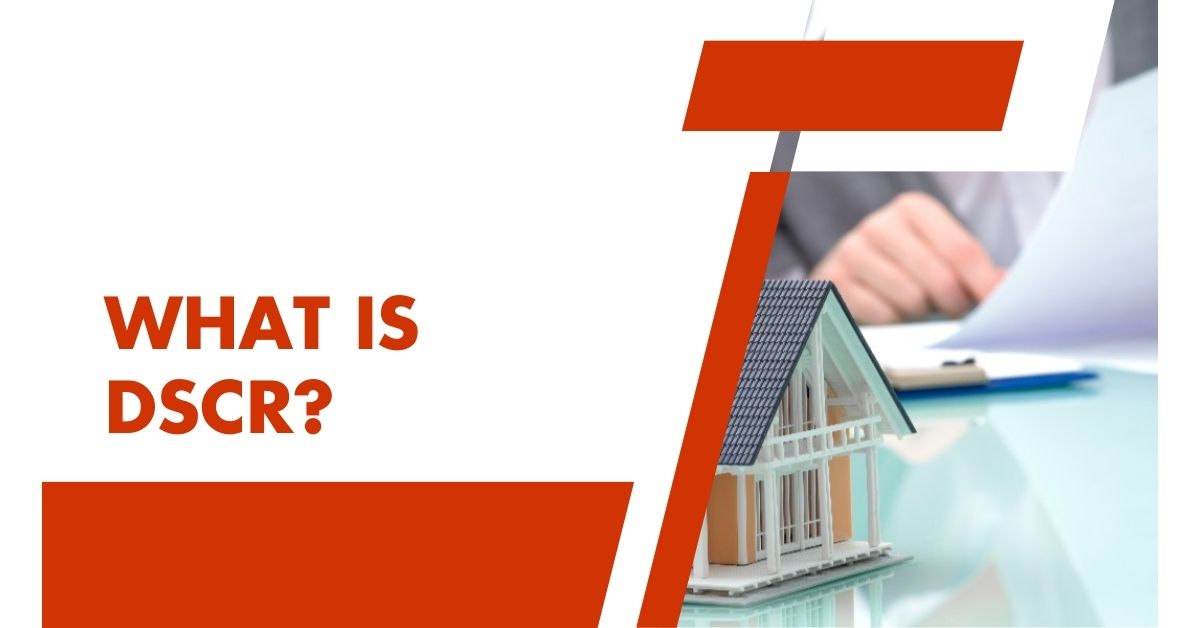The Debt-Service Coverage Ratio (DSCR) is useful in many areas of economics and business, especially for individuals, businesses, and the government. The ratio tells you how much money the company has on hand to cover its current cash needs and credit obligations.
The debt service coverage ratio (DSCR) shows how well a company, project, or person can pay their current debts with the money they make.
What is DSCR?

The Debt Service Coverage Ratio (DSCR) is a financial metric that shows how well a company can make money to pay its debt service responsibilities, which include principal, interest, and lease payments. To find it, divide a company’s net running income by the amount it pays each year to service its debts.
A higher DSCR means that a business has more than enough cash flow to pay its debts. This makes the company a more appealing borrower for lenders. On the other hand, a lower DSCR means that the company might have trouble paying its debts, which raises the risk of failure. The DSCR is often one of the most important things lenders look at when deciding whether to give a loan and what interest rate to charge.
What is DSCR Ratio Formula?
Debt Service Coverage Ratio (DSCR) Formula:
DSCR = Net Operating Income (NOI) / Annual Debt Service (ADS)
- Net Operating Income (NOI) is the income a property generates after deducting operating expenses like property taxes, insurance, and maintenance costs.
- Annual Debt Service (ADS): This is the total amount of principal and interest payments due on a loan over a year.
If you divide a property’s net running income by its annual debt service payments, you can find out how many times that income can cover those payments. A higher DSCR means that you are more likely to be able to pay your debts, while a lower DSCR means that you might be having trouble paying your bills.
How to Calculate Debt Service Coverage Ratio?
Understanding the Components:
- Net Operating Income (NOI) is the revenue a property generates after deducting operating costs. For example, if a property generates a rental income of ₹10,000 per month and has monthly expenses of ₹3,000, then NOI would be ₹7,000 per month or ₹84,000 per year.
- Annual Debt Service (ADS): This is the total amount of principal and interest payments due on a loan over a year. If a loan has a principal of ₹5,000,000 and an annual interest rate of 10%, the annual interest would be ₹500,000. If the loan is to be repaid over 20 years, the annual principal payment would be ₹250,000. Therefore, ADS would be ₹750,000.
Calculation:
DSCR = NOI / ADS
For example, if a property has an NOI of ₹84,000 per year and an ADS of ₹750,000, then:
DSCR = ₹84,000 / ₹750,000 = 0.112
Interpretation:
A DSCR of 0.112 means that the property’s net operating income can only cover 11.2% of its annual debt service. This is generally considered a very low DSCR and indicates significant financial strain. A DSCR of 1.25 or higher is often considered a healthy ratio.
How does DSCR Work?
To figure out a property’s debt service coverage ratio (DSCR), you have to see how well it can make enough money to pay its debts. It checks the property’s yearly debt service payments (ADS) against its net operating income (NOI). If the DSCR is high, it means that the property can easily pay its debts. If it is low, it means that the property is having trouble making ends meet.
As an example, if a property brings in ₹100,000 a year in net operating income and pays ₹80,000 a year to service its loan, its DSCR would be 1.25. By this calculation, the property makes 25% more money than it owes. It is usually thought that a DSCR of 1.25 or higher is a healthy ratio, meaning that the property can easily pay its debts.
What is a Good or Bad Debt Service Coverage Ratio?
A Debt Service Coverage Ratio (DSCR) of 1.25 or higher is usually thought to be good. This means that the property makes at least 25% more in net running income than it pays in debt each year. If the DSCR is 1.25 or higher, it means that the property can easily pay its debts and is less likely to stop paying them.
It’s bad if the DSCR is less than 1.00. This means that the property’s net running income is not enough to pay the interest on its debt. If the DSCR is less than 1, it means that the property might go into financial trouble or fail.
But the best DSCR can be different based on things like the type of property, where it is located, the market conditions, and the lender’s capacity to take on risk. A DSCR slightly below 1.00 might be fine sometimes if the house has other features that lower the risk.
Want to read more blogs related to debt ratios? You can also read these about ratios by clicking the links given below:
- What is Debt to Capital Ratio? Decoding the Key to Financial Risk
- What Is Debt To Equity Ratio? The Ratio That Reveals A Company’s True Story
Interest Coverage Ratio vs. DSCR
| Feature | Interest Coverage Ratio | Debt Service Coverage Ratio (DSCR) |
|---|---|---|
| Focus | Interest payments | Principal and interest payments |
| Calculation | EBIT / Interest Expense | NOI / Annual Debt Service |
| Components | Earnings Before Interest and Taxes (EBIT) | Net Operating Income (NOI) |
| Purpose | Measures ability to cover interest expenses | Measures ability to cover all debt obligations |
| Relevance | Primarily for bondholders and lenders | Primarily for property owners and lenders |
Why Is the DSCR Important?
It’s important to know the Debt Service Coverage Ratio (DSCR) because it shows how financially stable a property is and how well it can pay its debts. If the DSCR is high, it means that the property is making enough money to cover the mortgage payments, which include both the capital and the interest. This is a very important thing that lenders look at when they decide how much interest to charge on loans.
Having a high DSCR can also help bring in investors and raise the value of the home. Potential sellers will see this as a sign that the property is financially stable and has a lower chance of not being paid for. A high DSCR can also give property owners peace of mind, because they know that their investment is safe from financial problems.

